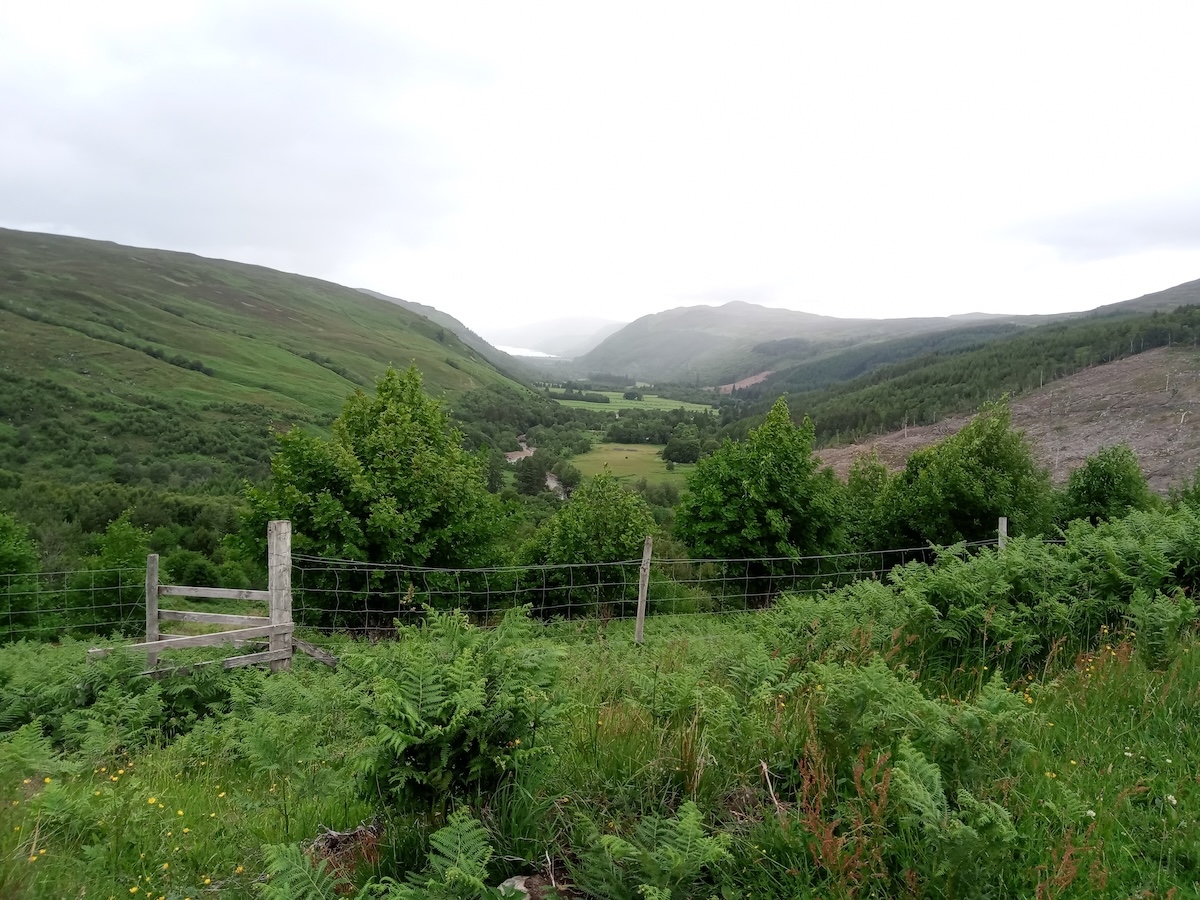For my 75th birthday this week I treated myself to a solo expedition into the hills.
I wanted to re-capture the spirit of adventure of my youth, to do what John Muir did and get out of town and into the wilderness. And I chose a special place, the Inverbroom estate, recently bought by the Scottish Wildlife Trust.
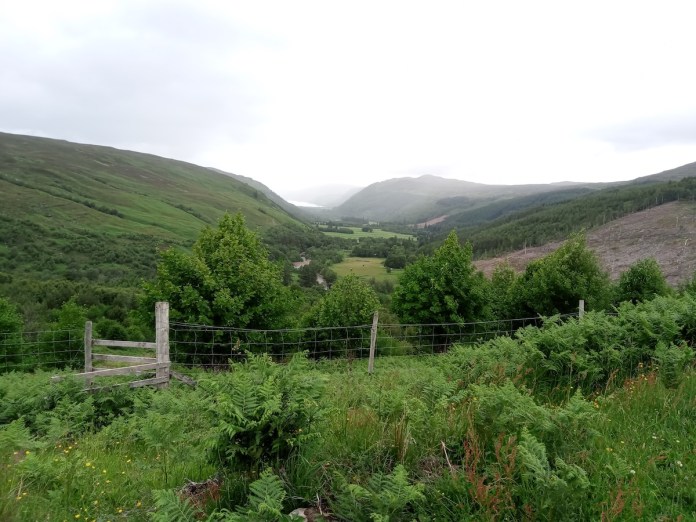 The call of the wild. Inverbroom, North West Highlands
The call of the wild. Inverbroom, North West Highlands
It’s a glen of some 18,800 acres, at the head of Loch Broom, a mixture of woodland, peat bogs, farmland, lochs and mountains, in particular two Munros, Sgurr Breac (speckled peak) and A’Chailleach (old woman). I wanted to climb these, to complete my round of the Fannich hills and to celebrate the fact that the Scottish Wildlife Trust has now taken custody of this land.
It will be working to restore native woodland and peatland and practising environmentally-friendly farming. I’ve been a volunteer with the SWT for years and it’s exciting to see it managing a large estate as well as its 100 small reserves across Scotland.
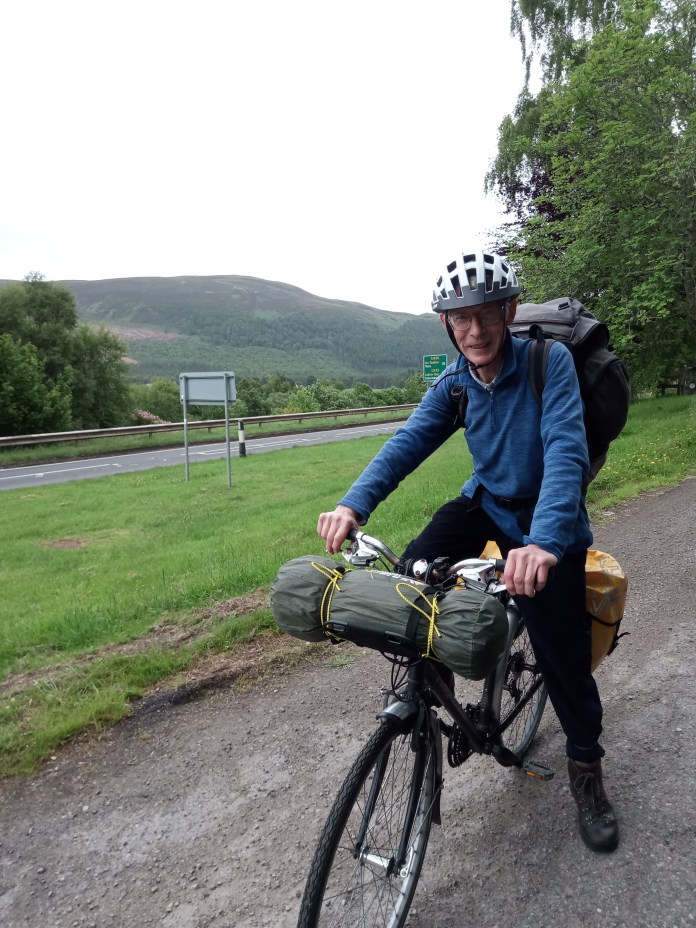
So I loaded my bicycle with tent and gear and boarded the train from Edinburgh to Garve, north-west of Inverness. There was then a 20 mile cycle along the busy Ullapool road to the Corrieshalloch Gorge, a nature reserve owned by the National Trust. I turned off onto the quieter Dundonnell road and cycled the last 5 miles to Loch a’ Bhraoin where I set up base-camp.
It was a lovely spot, by a rushing burn, in a meadow of orchids. There were no midges, thanks to a strong, cool breeze. The breeze strengthened to a storm overnight but had blown itself out by the morning. I washed in the river, brewed a fine cup of tea for breakfast and by 9am I was on my feet and trying to work out which hill was which.
I followed a stalkers path up the glen, following the trumbling Allt Breabaig river. The heather, the mountain flowers, the peat hags and the leaping frogs were my companions. At the col, I turned north-west and began the long climb up Sgurr Breac (999m). Low cloud swooped in from time to time and obscured the view but by one o’clock I’d reached the summit and enjoyed a moment of triumph.
The next Munro A’Chailleach (997m) stood a mile and a half away but there were several rocky downs and ups and cliff edges before I got there and the wind was getting stronger – maybe 35mph – pushing me about a bit. It was 3pm by the time I reached its less-than-impressive cairn. Alas there was no view.
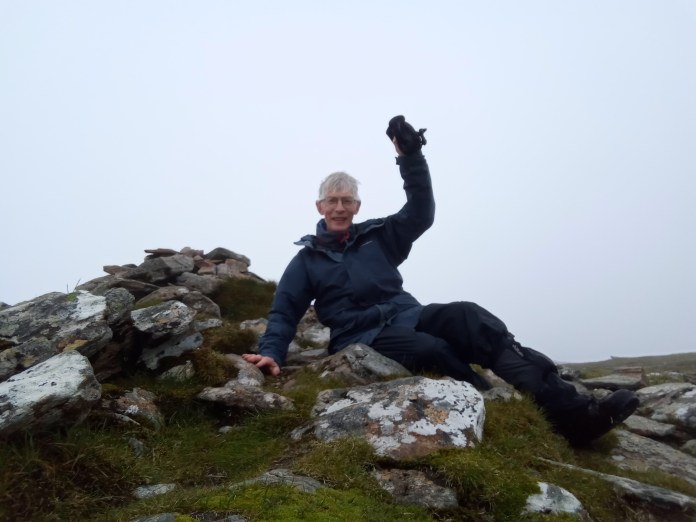 In the wind on A’Chailleach
In the wind on A’Chailleach
A party of six young men suddenly appeared out of the mist as I was slowly descending. They must have thought I was the ancient man of the hills – but at least I didn’t have their ridiculous walking poles. Soon I came down out of the cloud and had a fine view south-east to Loch Fannich. I could also see my way home, a track that led along the broad grassy ridge of Druim Reidh and dropped steeply down to the little bridge at the head Loch a’ Bhraoin.
By 7pm, I was back at my tent and brewing up another cup of tea. A wonderful day in the hills, and all the sweeter for never knowing whether I would reach those summits and get back down safely. Apart from those six marching pole- bearers and one other climber seen at a distance, I had the land to myself. The strong wind meant there wasn’t much wildlife on the wing, though I did hear a cuckoo and see some ptarmigan and darting brown birds, possibly meadow pipits.
How privileged we are in Scotland to have the right to roam and can camp in the wilderness, provided, of course, we cause no damage and leave no trace behind. It is a deal to be grateful for. It allows us to develop a spirit of adventure and challenge which keeps life fresh and interesting.
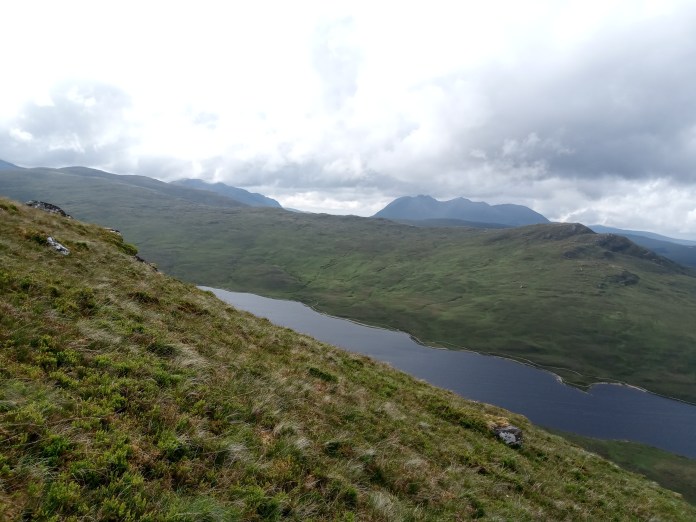 Loch a’Bhraoin
Loch a’Bhraoin
I don’t claim any special advantages for hill-walking. There are other routes to adventure. I saw at least six or seven platoons of motorcyclists, all in back, enjoying the thrills of the open road in spectacular countryside. There was a convoy of cars with tent-boxes on their rooves. A group of open-topped sports cars swooped past me while I stopped at the Corrieshalloch Gorge. And, of course, there were the coaches and campervans, trundling along the roads, all seeking their own adventures.
The challenge for the Scottish Wildlife Trust, and all the other environmental charities, is to manage all these adventurers, while preserving the wildlife and the countryside they have come to enjoy.
So far in Scotland, I think they’ve succeeded.
Like Loading…
Related
